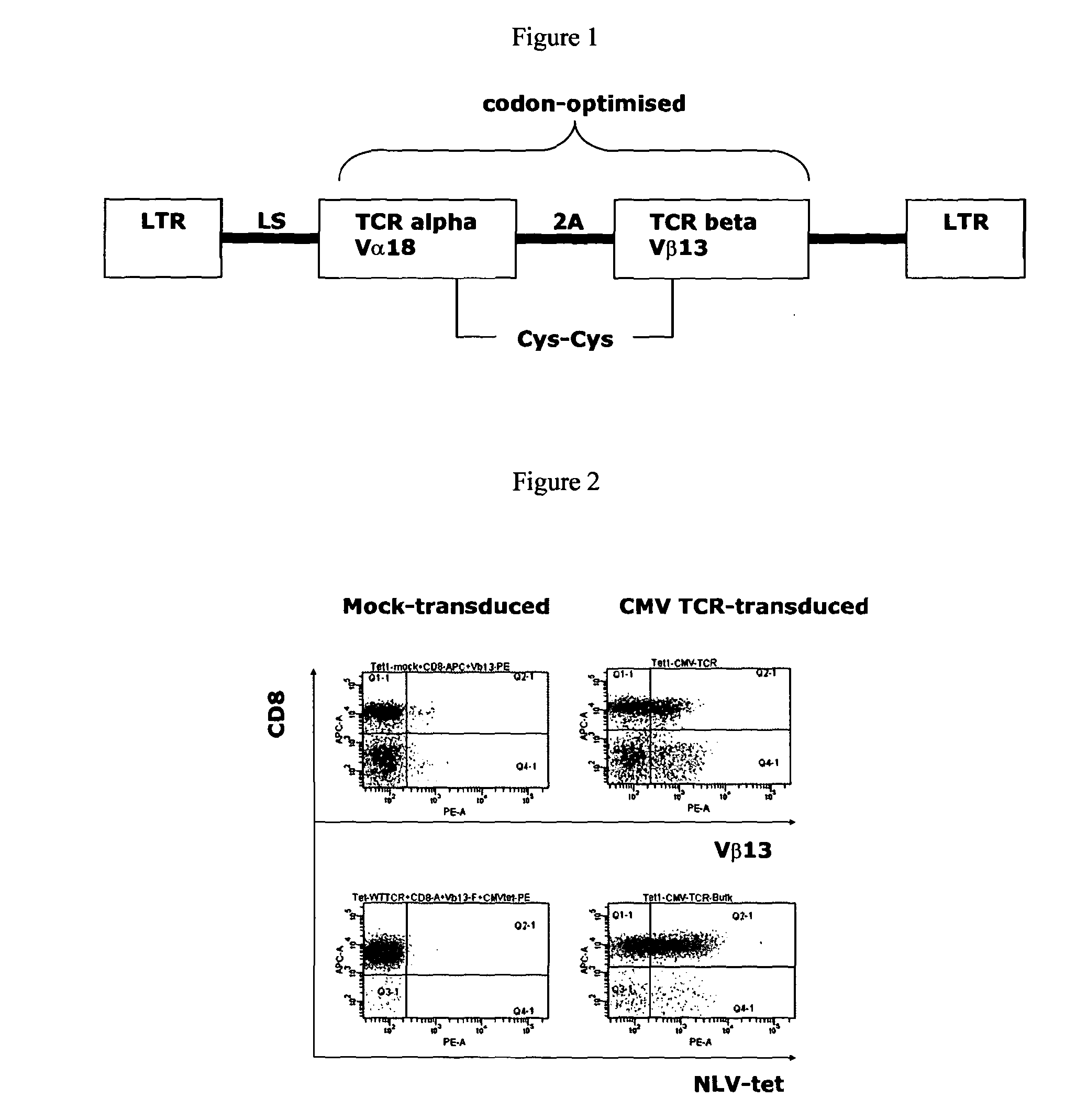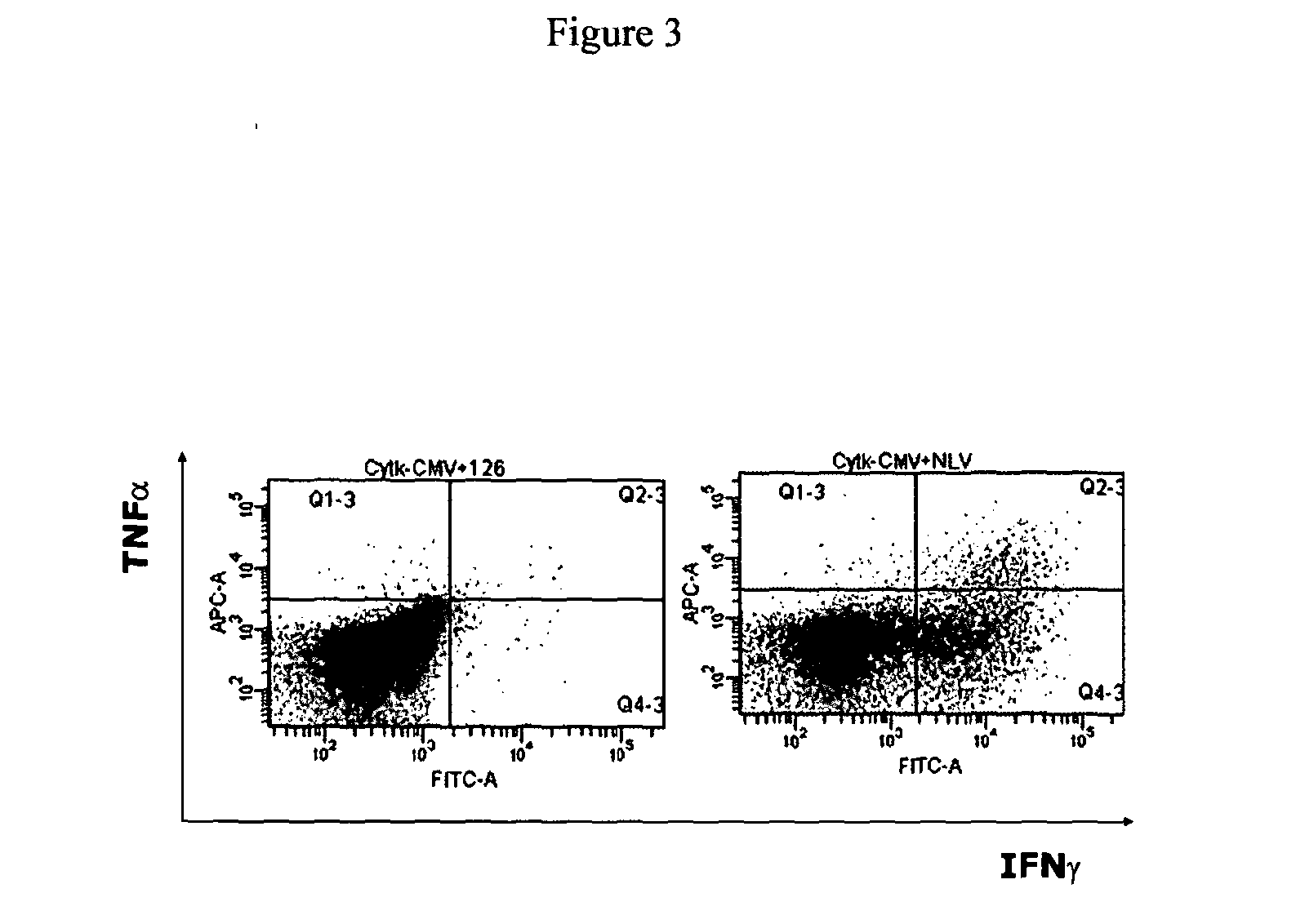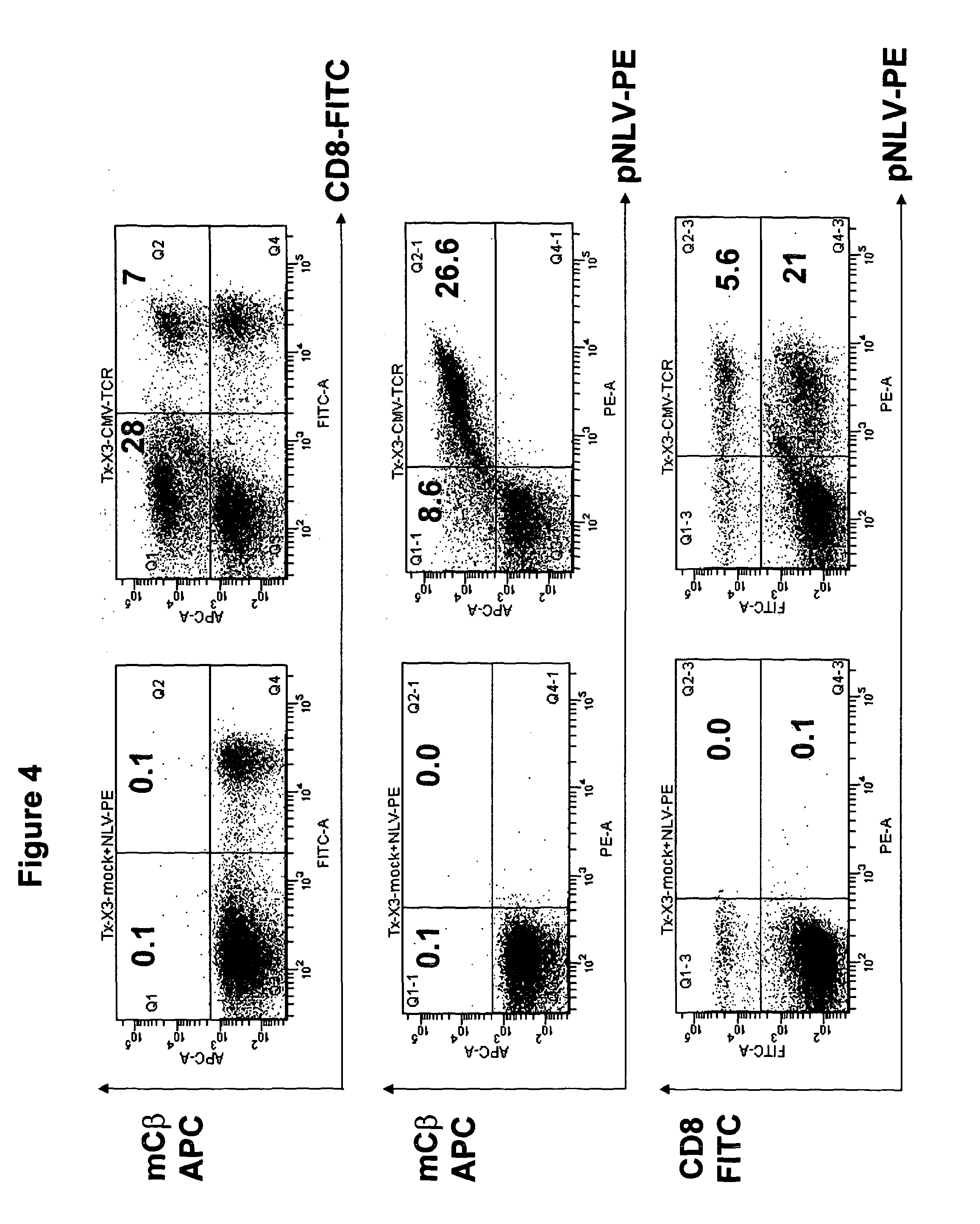T-cell receptor capable of recognising an antigen from cytomegalovirus
a cytomegalovirus and receptor technology, applied in the field of t-cell receptors, can solve the problems of antiviral therapy, serious side effects, and significant morbidity and mortality
- Summary
- Abstract
- Description
- Claims
- Application Information
AI Technical Summary
Benefits of technology
Problems solved by technology
Method used
Image
Examples
example 1
Construction of a Retroviral Vector to Deliver CMV-Specific TCR Genes
[0199]An important issue for TCR gene therapy is the selection of vectors capable of sustained high-level expression in T lymphocytes. High expression levels are required to allow the introduced TCR to compete with the endogenous TCR for a limited pool of CD3 molecules. Further requirements for TCR gene therapy are (i) a transduction efficiency of up to 30% with minimal ex vivo manipulation, (ii) the absence of replication competent vectors, and (iii) stable TCR expression over time to allow for memory development.
[0200]In this study the MP71 vector backbone was used with a codon-optimised TCR sequence and an additional cysteine in each alpha and beta chain constant region to enhance gene expression and minimize mis-pairing with endogenous TCR chains. The MP71 vector backbone has been described previously (Hildigner et al (1999) J. Virol. 73:4083-4089). The LTR of the MP71 vector is derived from the Myeloproliferat...
example 2
Production of CMV pp65-Specific TCR-Transduced Human T Cells
[0202]Human T cell receptor (TCR) genes specific for CMV were transduced into human T cells by using retroviral vectors carrying the desired TCR genes. Briefly, amphotropic packaging cells expressing the retroviral gag-pol genes were transfected with the specified TCR-retroviral vectors by using calcium phosphate precipitation method. After the retroviral transfection, the transfection medium was changed into human T cell medium for the harvesting of retroviral supernatant. The collected retroviral supernatant containing the viral particles expressing the desired TCR genes were then used to infect / transduce activated human T cells. 24 hours later, the introduced TCR genes are expressed on the surface of transduced T cells, and can be detected by FACS staining.
[0203]As shown in FIG. 2, retroviral transfer of the CMV pp65-specific TCR results in TCR expression on the surface of recipient T cells as determined by peptide / MHC t...
example 3
Intracellular Cytokine Staining of TCR Transduced T Cells
[0205]To demonstrate the functional antigen specific activity, the present inventors performed antigen specific stimulation and intracellular cytokine staining assays.
[0206]TCR-transduced T cells (2×105) were incubated with 2×105 T2 stimulator cells coated with 100 mM relevant (pNLV: NLVPMVATV) or irrelevant (pCLG: CLGGLLTMV) peptide in 200 ml of culture medium containing brefeldin A (Sigma-Aldrich) at 1 mg / ml. After an incubation period of 18 h at 37° C. with 5% CO2, the cells were first stained for surface CD8 or CD4 and then fixed, permeabilized, and stained for intracellular IFNg, IL2 and TNFa using the Fix & Perm kit (Caltag) according to the manufacturer's instructions. Samples were acquired on a LSR II flow cytometer and the data was analyzed using FACSDiva software (BD Biosciences).
[0207]The results are shown in FIGS. 3, 5 and 6.
PUM
| Property | Measurement | Unit |
|---|---|---|
| volume | aaaaa | aaaaa |
| width | aaaaa | aaaaa |
| frequency | aaaaa | aaaaa |
Abstract
Description
Claims
Application Information
 Login to View More
Login to View More - R&D
- Intellectual Property
- Life Sciences
- Materials
- Tech Scout
- Unparalleled Data Quality
- Higher Quality Content
- 60% Fewer Hallucinations
Browse by: Latest US Patents, China's latest patents, Technical Efficacy Thesaurus, Application Domain, Technology Topic, Popular Technical Reports.
© 2025 PatSnap. All rights reserved.Legal|Privacy policy|Modern Slavery Act Transparency Statement|Sitemap|About US| Contact US: help@patsnap.com



